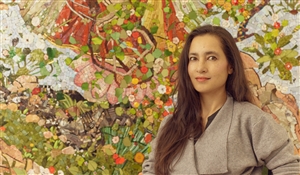Discovering a Painting by Egon Schiele After Over 90 Years
15 May 2022"Leopold Czihaczek at the Piano", a painting created by Egon Schiele in 1907, was found in a private collection in Vienna and will be displayed for the first time in the Leopold Museum of Austria. Outstanding artworks by Expressionist artists are stored in this museum. Rudolf Leopold, the founder of the museum, was one of the leading sponsors of Schiele, whose great reputation is a result of Leopold's efforts to exhibit his artworks.
The painting dates back to a period in which impressionism was the prevalent art movement and the artist himself was about 17 years old. The character sitting against the piano is Leopold Czihaczek, who had adopted Schiele since he lost his father when he was 15. This painting was last seen in the Leopold Museum's catalogue printed in 1972.

Leopold Czihaczek at the Piano (1907) was painted shortly before Schiele’s 17th birthday. Photograph: Leopold Museum
Since then, there was no evidence indicating whether or not the painting still exists, until it was discovered after the current owners of the painting informed the museum about it. Hans-Peter Wipplinger, director of the Leopold Museum, said about the painting:
"Leopold Czihaczek at the Piano is a masterpiece of Schiele's early work… The current owners have agreed to place the painting at the disposal of the Leopold Museum as a permanent loan. Following its cleaning and restoration, we will have the chance to make it accessible to the public as part of our permanent presentation on Vienna 1900 and within the museum's unique collection of paintings and drawings by Schiele." [Source: Egon Schiele painting of his uncle rediscovered after over 90 years | Egon Schiele | The Guardian]
Throughout his artistic career, Egon Schiele achieved a distinct position in the art world of the 20th century by his figurative and distorted portraits. He usually used sepia shadows in representing self-portraits and models. Based on his interest in symbolism in painting, he entered the Academy of Fine Arts in Vienna but later left there because of the conservative attitude dominating its educational system. He was inspired by Gustav Klimt, one of the most prominent members of the Vienna Art Nouveau movement. Schiele's paintings are distinguished because of the twisted, unconventional body forms in his paintings. Prior to presenting nude art, the naked figures that he depicted using pencil, watercolor, or oil, conveyed feelings of fear, anxiety, and degeneration. Schiele's paintings are stored in the Metropolitan Museum of Art, the Museum of Modern Art, the National Gallery of Art, and the Leopold Museum. Leopold Museum's collection includes 200 of his works and 8 paintings have been sold in auctions so far.
Source:
- www.theguardian.com






